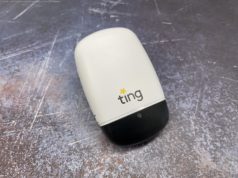The specifications for the new iPhones and Samsung’s latest Galaxy devices are now official. Based on those specs, how do these phones compare for business buyers?
Dissecting Apple’s new iPhones for business pros
The new crop of high-end smartphones from Apple and Samsung have been released, and the season of armchair quarterbacking of which one reigns supreme has begun.
When it comes to stacking these phones up against each other, particularly in the consumer space, the raw hardware specs are what usually make one phone stand out against another.
However, as I have been quickly learning, although they are good general indicators of technological maturity, you can’t look at speeds and feeds alone when it comes to flagship smartphones and their overall business worthiness.
It should be noted that when it comes to raw industrial design, none of these phones, with the exception of the Samsung Galaxy S8 Active are particularly well-suited for vertical market, field-oriented applications.
That’s because, even though they may be IP67/IP68 water resistant, they aren’t hardened in any way against drops or side impacts out of the box — they are made to appear as objet d’art more than anything else for marketing purposes.
So, keep in mind that the base level specs in terms of overall weight and dimensions are going to change a lot (such as 50g to 60g additional heft and several millimeters of additional thickness) once you put a protective case such as an OtterBox or LifeProof on them.
For business applications, you want to look for a phone that can handle the stresses of daily use, and for someone who travels a lot and works in the field, you want a phone design that is somewhat more rigid.
The classic thick bezel/metal design of the iPhone 7/iPhone 7 Plus is actually the most well-suited design for this type of usage scenario because it allows for a case made with thick polycarbonate (such as the OtterBox defender) that can protect the screen against not only side impacts but also front impacts.
With the introduction of the iPhone 8 and iPhone 8 Plus, and also the iPhone X, Apple has moved to a glass sandwich design. The iPhone 8 and iPhone 8 Plus retain the thick bezel and physical home button of the previous generation, but not the metal casing. This makes the phone more fragile overall and more prone to accidental damage from routine use.
The Samsung devices are edge-to-edge bezel-free and buttonless screen designs that make it more difficult to protect the screen because a protective case will not have as much material on it to reinforce the edges and will also not provide as much bezel elevation as a traditional snap-on case design. And like the current crop of iPhones, they are also glass sandwiches, so they are equally fragile.
Read also: Does Face ID make the iPhone X more secure? Depends who’s asking | 10 best smartphones: Galaxy Note 8 still trumps iPhone X | iPhone 8, iPhone X will charge to 50 percent in 30 mins, but it’ll cost you
The Galaxy S8 Active incorporates all of the technology of the Galaxy S8, but with a built-in Otterbox-style MIL-STD spec casing and an expanded 4,000mAh battery. For this reason, it has the advantage on the industrial design front.
How heavy the device is will factor in as to how portable it is. When it comes to smartphones, every single gram counts, because the business road warrior and field user want to shave off as much extra weight as possible.
At 148g caseless, the iPhone 8 is the clear winner here in the ultralight class. However, keep in mind that a thick polycarbonate case with holster is going to add about 4.6ounces (130g) of weight, which effectively doubles your carrying burden. So, think carefully about your use case, how you carry it, what apps you tend to work with, and how often you use the device when choosing your smartphone model.
Both the iPhone 8 and iPhone 8 Plus use legacy IPS (in-plane-switching) LED-backlit LCD (light emitting diode/liquid crystal display) tech borrowed from the iPhone 7 and 7 Plus which tend to be less power consuming and have significantly less color accuracy when compared to current OLED (organic light emitting diode) on the iPhone X and AMOLED (active matrix OLED) tech on the Samsung devices.
Brightness and uniformity are said to be better with LCD, because the light is generated by individual blue-white LED lamps, not by the pixels themselves on an OLED display. The off-axis viewing angle and contrast ratio is also better with OLED technologies.
Read also: Why I’m skipping the iPhone X | Galaxy Note 8 users have options galore. iPhone X users? Not so much | The iPhone X is basically Samsung’s Note 8 plus Animojis
In addition to poorer contrast ratio, LCD screens also don’t represent blacks as well as OLED and AMOLED. With OLED, the pixelation is noticeable when using for extended periods. Although less efficient than LCD, AMOLED is also a bit more power efficient (with the display being the primary power draw on the battery on a smartphone) than OLED and also represents whites better.
LCDs tend to have very high refresh rates as well as better performance when it comes to overall brightness when compared to OLED, however that is changing.
Differences between the two major screen technologies aside, what you want to be concerned with is pixel density, or Pixels Per Inch (ppi). The iPhone 8 and iPhone 8 Plus have significantly lower ppi than the iPhone X or any of the Samsung devices.
Generally speaking, as your screen size gets larger, you also want your ppi to be higher.
The higher ppi of Galaxy devices and the fact that AMOLED is used on them pretty much exclusively swings the display technology advantage over to Samsung.
From a birds-eye view, the A-series and the Snapdragon 835 and the Exynos 9 are very similar ARM-based SoCs manufactured in 10nm processes, which utilize ideas borrowed from ARM’s big. LITTLE hybrid architecture.
All three chips use clusters of ARM cores and turn them on and off as needed in order to minimize power consumption. They have far more in common than they are different.
The Apple A11 « Bionic » produced by TSMC utilizes 4 smaller « Mistral » cores and two larger « Monsoon » cores (big. LITTLE design), which can operate simultaneously in tandem with an Apple-designed tri-core GPU.
The actual clock speed of these cores is unknown, but the overall graphics performance of this SoC is said to be at least twice of a comparable Samsung or Qualcomm chip.
The Samsung Exynos 9 used in global versions of the Galaxy devices utilizes twin Quad-core CPU clusters, one larger and more powerful pair running at 2.4Ghz, and the other smaller pair running at 1.7Ghz, which are combined with an ARM Mali G20 for graphics acceleration.
The Qualcomm Snapdragon 835 utilizes eight equally sized Kryo 280 cores clocked up to 2.45Ghz, with an additional Adreno 540 GPU driving 2D/3D graphics. It’s not evident how the chip is able to allocate each individual core or cluster them in groups or clock rate them, but presumably, like the others, this is what it does in order to minimize power consumption.
Generally speaking, the A11 is going to be the chip to beat. Keep in mind, however, that where it is going to shine is games and apps that heavily use 3D graphics, such as for AR functionality. The differences between these chips are less meaningful when we are talking about business and 2D text-oriented and HTML apps.
While the processor is not a meaningful indicator of performance for business smartphones, onboard memory absolutely is.
Apple’s iOS is said to be more resource efficient than Android and also assigns thread priority to the user interface — so it’s more of a « clock-heavy » OS. That means it can do more with less in the RAM department. Conversely, because of the way Android is engineered, it needs that extra memory to unpack stuff, collect garbage, and have space for its runtime.
That being said the iPhone 8 has the least amount of RAM of any of the devices on our list and should probably be eliminated for heavy business use, particularly when working with apps that are resource-intensive. The iPhone 8 Plus is a little better with 3GB, and I would say that number should be the bare minimum in consideration of a phone or tablet purchase.
All the Samsung phones have a minimum of 4GB of RAM. It should be noted that there are a number of phones on the market now with 8GB, such as the OnePlus 5. Android will literally eat every bit of RAM you can throw at it because it will grab everything left over and use it as a cache.
So, in the Android world, there is no such thing as having too much RAM. Four gigabytes is certainly good; the 6GB in the Galaxy Note is better.
In terms of local storage, you want to buy what you can afford and how much you reasonably need. Out of the box, all the Samsung phones are the same, in that they come with 64GB of flash, with the added capability of using a micro SDHC card (200GB and up) for pictures, media, and app storage. Not all Android apps can use SD storage the same way, so keep that in mind.
Apple devices have fixed local storage amounts. So, if you buy a phone with 64GB, it’s going to stay 64GB. You can always page out to cloud storage to offload and retrieve big pictures and files, such as with OneDrive or iCloud, but keep in mind that to do that, you need working network connectivity and it takes time to upload the photos when you sync them to your cloud service.
Another consideration is that Apple and Samsung devices also use different types of flash technology. Apple uses custom-made NAND chips and Samsung uses its own high-volume off the shelf UFS 2.1 components. The difference is that Apple NAND sequential reads and writes are much faster, whereas Samsung flash storage density is higher which allows for higher capacity chips at a lower cost. So, if your application is heavily I/O bound, the Apple chip is definitely going to perform better.
In terms of camera capability, Apple and Samsung are effectively at parity for still and video. Both are using 12-megapixel OIS-capable sensors in the rear, the primary difference is which models use dual sensor (iPhone 8, iPhone X, and Galaxy Note 8) for optical zoom versus single sensor and whether both rear sensors have OIS (iPhone X, Note 8).
There’s a slight difference in f-stop with the rear camera on the Samsung phones, but that will not affect light sensitivity and picture quality much. The Samsung phones have somewhat better low-light aperture performance (f/1.7) with the selfie cams than the iPhones (f/2.2) do, but unless you plan to do most of your video conferences in dark rooms, I wouldn’t worry about it too much.
Both the iPhones and the Galaxy devices use dual-band 802.11ac with MU-MIMO and Bluetooth 5 transceivers. It’s a wash.
However, when it comes to baseband (mobile network), things get tricky. It may be important for businesses to know that the new iPhones may not support Gigabit LTE, as it appears they do not have 256 QAM technology.
Based on the chipsets we have seen included on the latest PCB, they use LTE Advanced, are limited to 600Mbps speeds and do not support T-Mobile’s new 600Mhz Band 71 .
The Note 8 is confirmed to include Gigabit LTE capability, whereas the other Samsung devices are receiving that feature as an over-the-air carrier update in the coming months.
Home
United States
USA — software iPhone X vs Samsung Galaxy Note 8: Which has better business specs?






